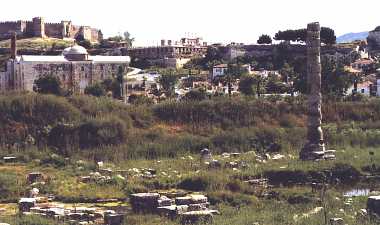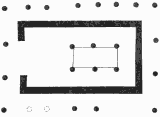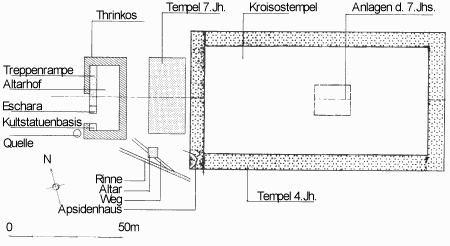
| Forum Archaeologiae - Zeitschrift für klassische Archäologie 4 / VIII / 1997 |

During the Mycenean times the hill of Ayasoluk and the Artemision showed remains of occupation. Until now little is known about the Ionian migration period, but since the 8th century BC Ephesus has played an important role within the Ionian civilization. Remains below the lower agora of the Roman town and a peripteros in the central base of the Artemision underline the specific signifiance of the site. Other than the Artemision, little is known about the remains of the 6th and 5th century BC.
Although Ephesus has been visited by many people since the time of Cyriacus of Ancona (1446 AD), archaeological investigations did not begin before the second half of the 19th century. John Turtle Wood began excavating there in 1864 and continued his archaeological work until he discovered the Artemision in January, 1870. Some of the excavated marbles can now be seen in the British Museum. In 1904 and 1905 the British Museum undertook another excavation in the Artemision and D.G. Hogarth discovered the earlier strata of the sanctuary.
The Austrians started their work at Ephesus 1895, an undertaking which continues until this very day having only been interrupted by World Wars I and II. The emphasis of the Austrian research was on the Roman town; however, since 1965 the Artemision has also been included in the activities.

(from Antike Welt, Sondernr. 27 (1996), fig. 32) |
The temple of Artemis is situated outside the Roman town in the plain, near the hill of Ayasoluk and its remains lie partly in the ground water. In the center of the temple a peripteros, with the dimension of 9.50 m wide and 13.30 m long and with 4 x 8 columns, was excavated. Within the cella is a rectangular base surrounded by six column bases in green schist. Beneath it a hoard of jewelry was found, perhaps the necklace for the xoanon (=cult statue). The whole construction is to be dated in the 8th century BC. |

